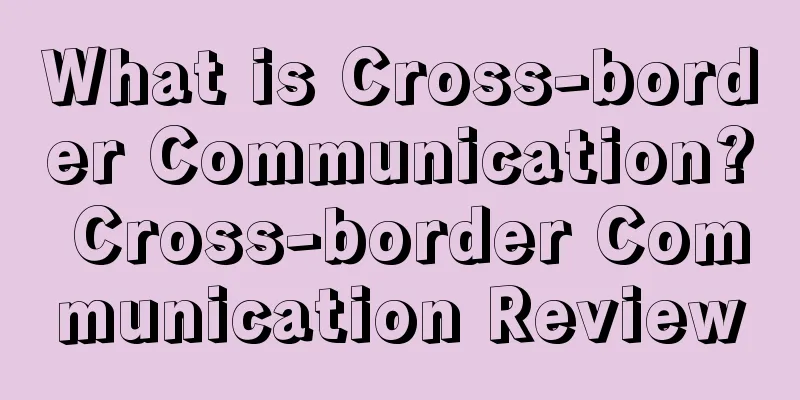Hello, everyone. It’s been a long time since we last met. I’ve been busy with the company’s Christmas season product sales and the seventh flash theme event sharing. I haven’t written anything for a long time. Many friends are promoting the sales of Christmas products and have also reported many difficult problems. In response to the needs of friends, today I will talk to you about how to formulate operational strategies for seasonal products. We have been making seasonal products for more than three years, mainly focusing on holiday products. Every year's product development covers many important holidays such as Valentine's Day, Easter, National Day, Halloween, Christmas, etc. Although the holidays are different and the product positioning is different, through reviewing the operating processes of all projects, they are basically the same. We mainly need to make plans from the following dimensions.The traffic of seasonal products fluctuates greatly. Keyword positioning affects the traffic size and conversion rate, which is crucial to promoting sales. Moreover, due to the short sales cycle, it is difficult to have the opportunity to optimize and adjust the promotion direction for the second time. 2. Traffic structure positioningThe core of hot-selling seasonal products is to ensure the optimization of natural traffic at the peak of search, including the accuracy and scale of natural traffic. Because the growth of market sales scale is very large despite the fluctuation of search traffic, we need to continuously accumulate order weights to ensure the continuity and stability of natural traffic growth. 3. Sales cycle positioningSeasonal products, especially holiday products, are products for celebrating holidays. Most holidays abroad last only one day, except for Christmas which lasts for two weeks. Therefore, user demand is very concentrated, resulting in a short sales cycle. However, those who understand the A9 algorithm know that on-site promotion requires weight accumulation, so it is particularly important to control the promotion time and sales time. 4. Inventory size positioningDue to the short sales cycle and concentrated user demand of seasonal products, inventory management becomes very important. If the inventory is too small, the promotion costs may not be recovered. If the inventory is too large, it may lead to unsalable products and a year's storage costs and storage capacity will need to be borne. Therefore, accurate assessment of sales volume is the core. 5. Promotion strategy positioning The traffic of seasonal products fluctuates greatly during the sales period. We need to quickly activate the keyword weight of the listing to obtain exposure during the new product period, and then accumulate accurate traffic or orders to obtain recommendations for natural traffic to ensure that we gain dividends during the traffic growth stage. Therefore, the configuration of the advertising structure and the advertising goals for each stage must be clear. Ok, now that we have developed the overall sales structure and understood the core elements, we will now conduct a specific analysis through a category case and develop a complete product operation strategy. The category we choose today is Christmas wreaths. We will first locate keywords through a product. The product case is Amazon’s own Christmas wreath (because the case I shared before involved the seller’s information and he was visited many times for tea, haha, this time I chose Amazon’s own product, Peace and Love). First of all, let’s clarify the reasons for choosing this case as an analysis sample: 1. The shelf time is long. This link has gone through 8 complete sales cycles from 2015 to 2022, and the annual sales rhythm is highly consistent. It is very suitable for studying traffic attributes and sales cycles. 2. In addition to having a higher weight in keyword ranking, Amazon's self-operated links have a very complex resource structure. There will be no off-site promotions or abnormal operations such as manual intervention in sorting, so the traffic structure is relatively stable and is very suitable for keyword analysis. 3. The sales time of the link is long, and the sales cycle is consistent every year. It is very suitable to study the fluctuations of historical data. Because we do seasonal product promotion, we need to find the rules of future growth trends from historical data and seize the dividends of traffic trends. (1) Real-time data analysis:
Now this link ranks around 9,000 in the home category, with about 120 orders per day. It is already in the hot-selling stage, so the current keyword reverse query is representative. We can obtain their search traffic source analysis through keyword reverse query: Through reverse query, we can see that their main traffic sources are currently the three keywords christmas wreath / christmas wreaths for front door / christmas wreath with lights, accounting for up to 70%, which are core traffic sources:
Through the frequency analysis of all reverse-lookup keywords, we can see that the main root words are christmas / wreath / wreaths, which means that the source of search traffic for this category is mainly keywords related to precise root words. The traffic structure of the category is relatively simple and vertical, which is suitable for promoting ranking through precise advertising. (2) Historical data analysis: This link has gone through 8 complete sales cycles, and the sales in each cycle are very stable and the order volume is large, so the historical traffic and keyword data of the link are more suitable as a reference to assist in verifying whether the current keyword positioning is accurate: By reverse checking the traffic, we can see the weekly fluctuations in the historical traffic of this link in 2021. Comparing with this year's data, we can see that the decline in natural traffic during the same period is very obvious. On the one hand, this shows that this year's economic consumption situation has indeed declined significantly, and the traffic on the site has decreased a lot compared with the same period last year; on the other hand, we see that from now until early December, the overall traffic will continue to grow, and the current sales base can continue to expand. By looking at the peak time period of natural traffic during the week of November 21-27, 2021, we can see that the main source of natural search traffic for this link last year was the words christmas wreath / lighted christmas wreath / lighted wreaths for outdoors / outdoor lighted wreaths for christmas. Compared with this year's search traffic sources, last year's main traffic was a core word + multiple long-tail precise keywords After downloading the keywords of last year's natural traffic sources and performing a word frequency analysis, we found that the root attributes are highly consistent with this year's keywords, which are also christmas /wreath/wreaths. The only change is that last year there were fewer core words and more long-tail words, while this year core words are the main source. Through the comprehensive comparative analysis of historical data and real-time data, we have a very clear positioning of keywords. We only need to use the two keywords "christmas wreath" and "christmas wreaths" to dig out all related keywords, and then conduct a correlation analysis between keywords and products to locate the keywords we need to promote. The correlation analysis between products and keywords. The logic of the current tools on the market is based on the search results of keywords in the past 30 days. By crawling the natural ranking display of similar products, and comparing and analyzing the display overlap of keywords of similar products, the relevance is determined. This logic is feasible because the core of natural keyword ranking is order volume and conversion rate. The more similar products there are, the stronger the keyword's ability to obtain traffic and product transactions will be, and the more relevant the keyword will be. However, to obtain the real consumer demand for each keyword, the most accurate method is to use user behavior data, that is, the top 3 data on click share and sharing share of keywords in the brand analysis library. This is the user's real transaction data and best represents the comprehensive transaction capacity of the product type under each keyword. Traffic structure positioning The traffic structure includes the size of the traffic and the changing trend of the traffic. Our keyword library has many words, but the popularity of each word is different, and the changing trend is also different. However, our sales goal is the same, which is to accumulate sales at each stage to ensure that our natural traffic increases steadily. Therefore, it is very important to choose different keywords as core traffic at different times. In addition, we also need to do a good job of positioning according to the traffic distribution of keywords in different sales stages after the link is put on the shelves. For example, on October 15th during the new product period, we chose the largest core words "christmas wreath" and "christmas wreaths for front door". At this time, the search popularity ranking of the core words is around 5,000, the traffic and competition are relatively small, and the advertising cost is low. However, once we have a natural ranking of core words during the new product period and it has been stable, the growth dividend brought by the traffic explosion period will be very large, and we can basically just lie down and raise prices all the way. If it is the peak search period in mid-November, the natural ranking of core words is stable, the order scale of links at the top of the natural ranking is large, the competition for advertising is fierce, and the conversion rate is low. It is basically impossible to improve the ranking of core words through advertising at this time. The cost investment is very high. You can only obtain accurate orders through precise long-tail word delivery, thereby obtaining a natural position relatively late for core words and consuming some inventory. Of course, there are also sellers who use black technology to intervene in the natural ranking by adding purchases during the peak search period to obtain low-cost traffic dividends. Unconventional operations are not within the scope of discussion. User demand for seasonal products is highly concentrated and fluctuates dramatically. They can be sold at high prices during peak periods, but after the holidays, no one will buy them even if they are free. The links of seasonal products are also hot-selling for a period of time, and then there are no sales or they are out of stock throughout the year. The advantage of this is that for all sellers, there is no obvious accumulation of historical weight like regular products, and there is a great opportunity for new products to enter. This is why there are many new links for seasonal products. However, since the links start from scratch to increase traffic, there is also the problem of attribution cycle for advertising promotion, so it is crucial to position the sales cycle well. To locate the sales cycle, we generally analyze from two dimensions: changes in the popularity of core search terms and changes in historical sales trends of competing products.We can see from the sales curve of competitors that there was basically no sales in mid-September. That is to say, although the search popularity of the keyword is very high, the sales of our similar competitors have not actually changed. Of course, I need to verify it through the historical sales curves of multiple competitors, which I will not expand on here. What we need to think about is that the keyword traffic is high, and whether other types of products generate sales under this keyword. We can also verify this through the keyword list data in September. Through Feiyu verification, we can see that in September, the sales of Amazon's own super links have increased significantly. So if our super head links have not been out of stock, we can also get early dividends when the overall market demand has just increased. Moreover, the order accumulation at this time is the order weight within 30 days, which has the greatest impact on the natural keyword ranking. It is easy to get very high-quality natural ranking, thereby reaping the peak traffic burst. I also learned that many seasonal sellers started a small amount of SD in September to improve the core word ranking. The essence is the same logic. Let's go back to the sales curve of the product case. The actual sales cycle starts from October 15th and sales last until December 15th. The ranking is always maintained within 30,000 in the HOME category. The peak sales period is from November 15th to November 25th, and the ranking is always maintained within 10,000 in the HOME category. Similarly, we can use the real sales curves of multiple competitors to verify and locate our sales cycle in multiple directions. Combined with our sales experience, the sales cycle of the wreath category is: October 15th - October 30th: New product period, mainly to increase the exposure of the link; November 1st - November 10th: Rising period, mainly increasing the keyword ranking of links; November 11th - November 18th: Stabilization period, mainly increasing the order volume of the link; November 19th - November 30th: Profit period, mainly to increase the sales price of the link and reduce the promotion cost; December 1st - December 10th: Recession period, mainly focusing on clearing inventory and avoiding unsalable goods. Once the sales cycle is clear, combined with our logistics cycle and production cycle, we can work backwards to figure out our order procurement time and product development time. In this way, the complete cycle of a project from development to after-sales can be planned. Summary: When we locate the sales cycle, we cannot simply analyze the changes in the search popularity of core keywords. We must also conduct a comprehensive evaluation based on the actual sales data performance of market competitors. Of course, we must also analyze what types of products can achieve growth in the early stages of the market from the differentiation of traffic fluctuations and sales volume fluctuations? What role can early market growth play in later traffic dividends? How can we get an entry ticket to the market early next year? There are many strategies that can be studied here, but they are also very uncertain. We still focus on the development of product conversion capabilities. Inventory size positioning After we have planned the keyword positioning and traffic structure positioning, and established a sales cycle model, we can start planning the order plan, which is our inventory scale. Inventory positioning is a relatively difficult sector among seasonal products because the market competition risks, policy risks, and product compliance risks are unknown. In addition, the sales cycle is short, and if there is too little inventory, it is easy to run out of stock, and you will be unwilling to not make more profits; if there is too much inventory, it is easy to be unsalable, and you will regret having to bear a year's storage costs and storage capacity risks. Regarding the positioning of inventory scale, my advice to everyone is to take the weighted average of competing product sales. We can use the historical query function of the product selection tool, set the time to November 2021, and the category to the wreath category. Then we can check the link sales of the entire wreath category in November last year, with a total of more than 3,000 links. We also need to perform further data screening in the historical database. We can establish multi-dimensional labels for the downloaded historical sales database, such as locating sales by price range; locating sales by size of wreaths; locating sales by materials of wreaths; locating sales by accessories of wreaths; locating sales by the time the links were put on the shelves; locating sales by the number of reviews of wreaths; locating sales by review scores; we can also analyze the historical promotion strategies of these links from the operational dimension, and locate sales based on operational capabilities; finally, we need to optimize the sales coefficient based on the market's competitive environment and changes in the scale of user demand, use this series of labels to screen our benchmark competitors, and refer to their historical sales data to plan our inventory. Promotion strategy positioning Taking into account the sales attributes of seasonal products, except for the peak period when the links remain hot-selling, the rest of the time period is basically dealing with out-of-stock or low-traffic and zero-sales status. Therefore, for all sellers, advertising promotion is on the same starting line. Of course, the weight of historical advertising groups and the weight of historical link sales do exist, but they are not that large and can only be auxiliary. The core growth still depends on the promotion strategy in the early stage of market demand, so the positioning of the advertising structure and advertising goals are very important. We generally analyze and position the promotion strategy from several dimensions: (taking Irish holiday decorations as an example) (1) Product attribute analysis: (2) Sales cycle analysis: (3) Traffic structure analysis: (4) Market competition analysis: (5) Sales target positioning: (6) Advertising structure positioning: This is a complete analysis method for promotion strategy positioning. In the above four sections, we have analyzed and disassembled keywords, traffic structure, sales cycle, and inventory size. Then our sales goals and advertising goals are very clear. Then we can match the advertising strategy for each sales stage, thus forming an advertising structure. In fact, the advertising structure of seasonal products is relatively simple. Most models are automatic advertising to run exposure in the new product period, precise advertising to run keyword ranking in the rising period, commodity advertising to supplement precise conversion in the stable period, and all advertising is closed in the profit period. If your product conversion rate is good, this model can basically solve the promotion problem of seasonal products. In addition, for seasonal products, the stability of reviews is also a very important dimension, especially for new links. It is easy to get bad reviews, which will cause the link conversion rate to drop sharply. Here are some solutions for you: Products with high unit price or good quality can use the Vine plan.
Products with a high rate of negative reviews often use merged variants. There are many ways to play with merged variants. A commonly used strategy is to merge product links from different seasons into a hyperlink.
Prepare seed links in advance, such as neutral high-priced gift products, release a small amount of inventory for the VINE plan, and merge with seasonal new products (the seed link can modify the listing information, and the merger success rate is higher); for example, low-priced air-freight products, after listing, do off-site promotion and rating.
Ok, the above is some thoughts on seasonal product operation and promotion. I hope it will be helpful for your business.
|










